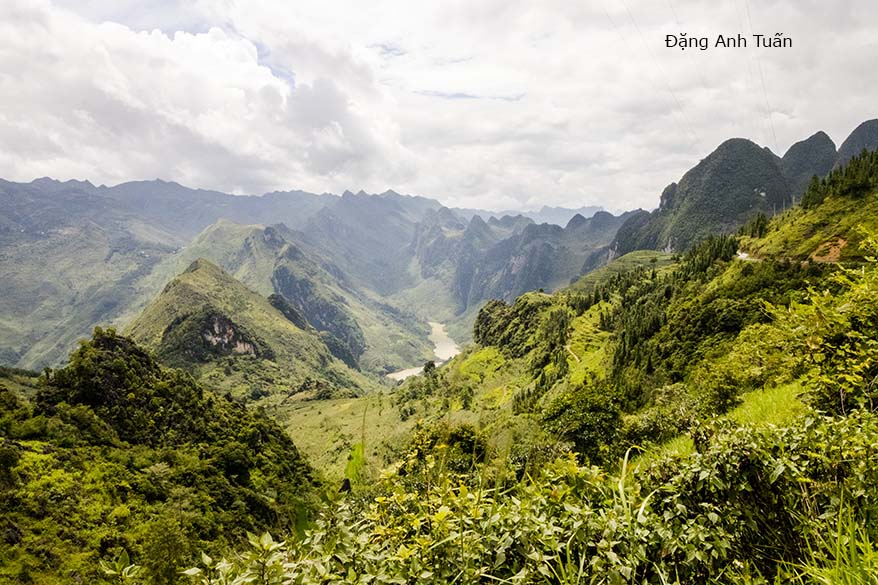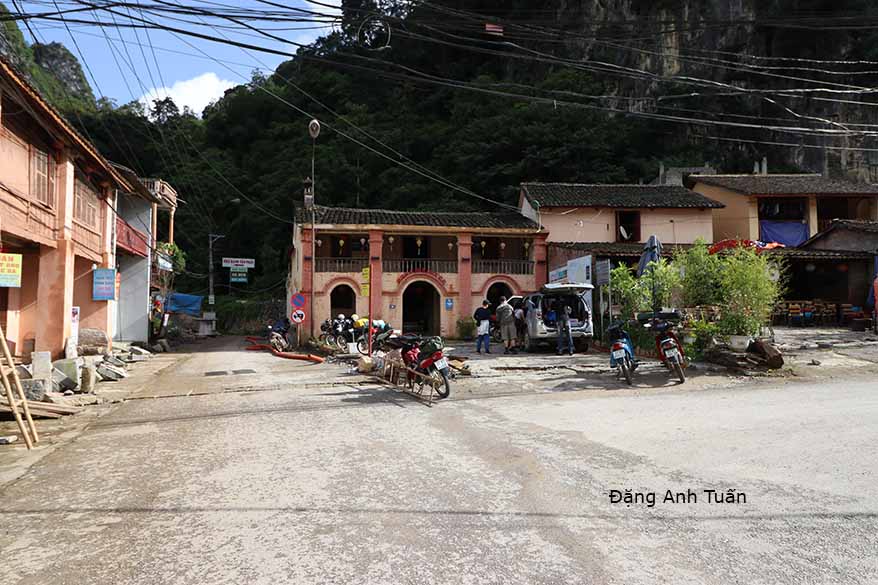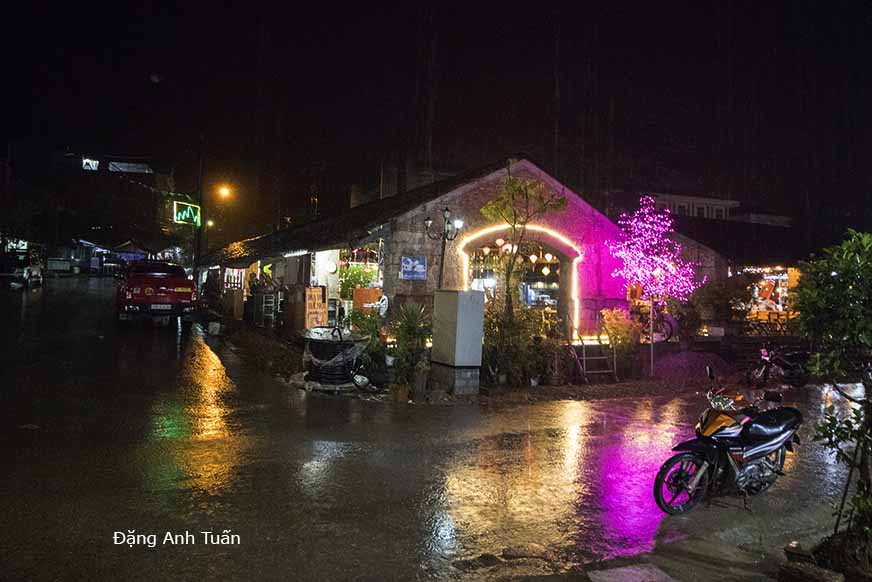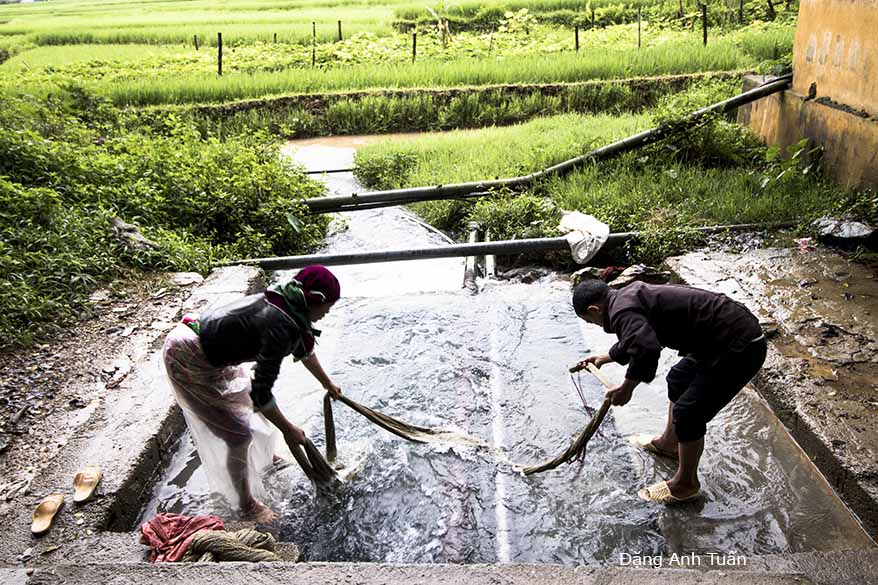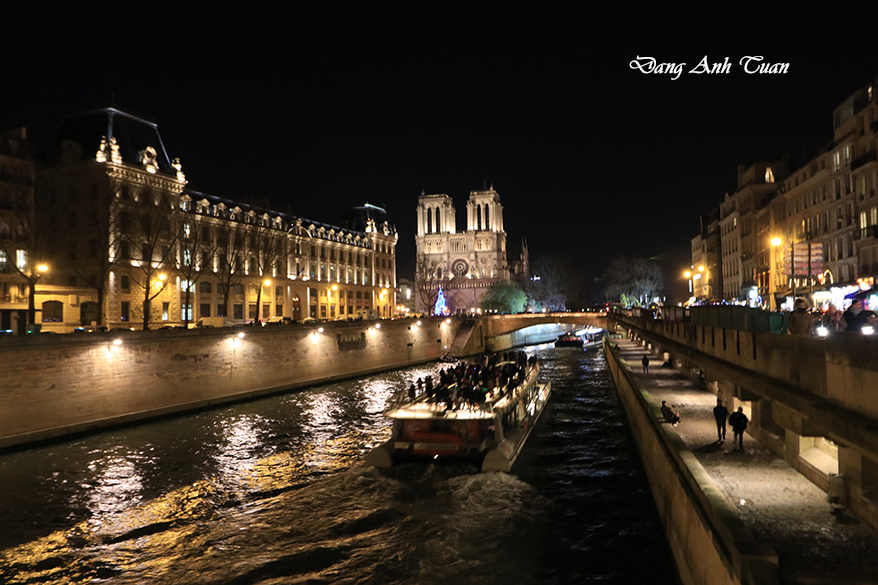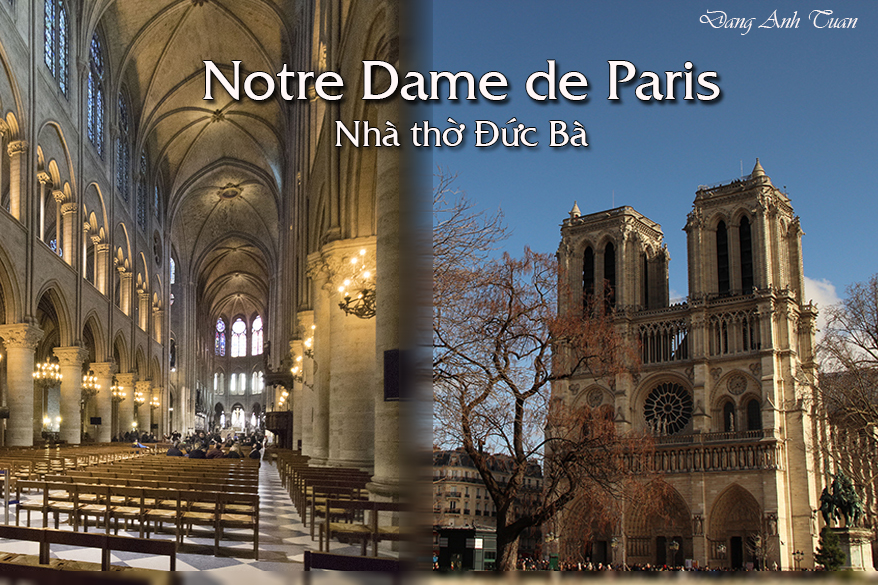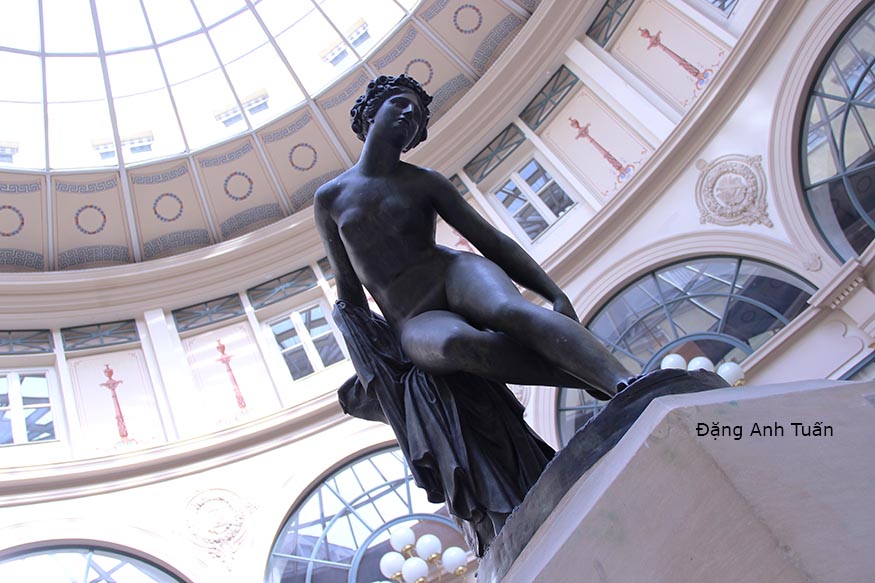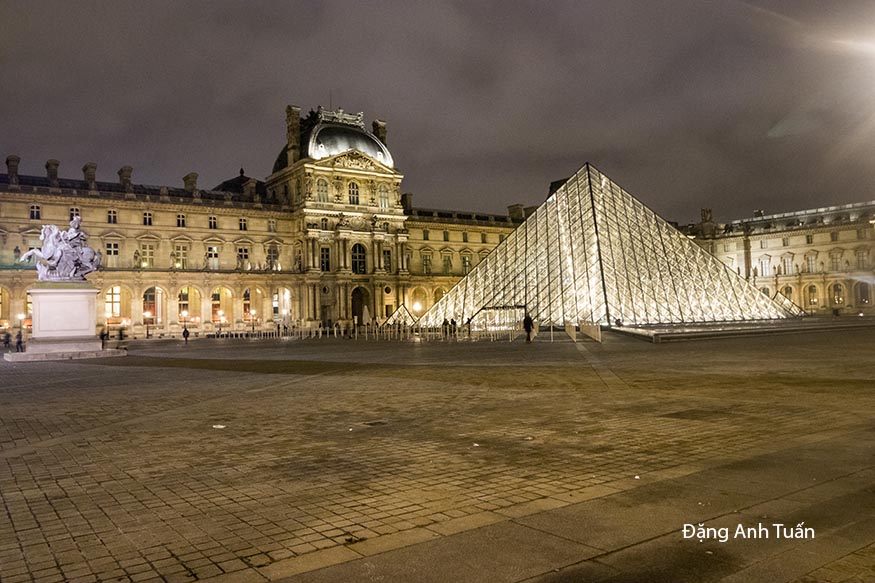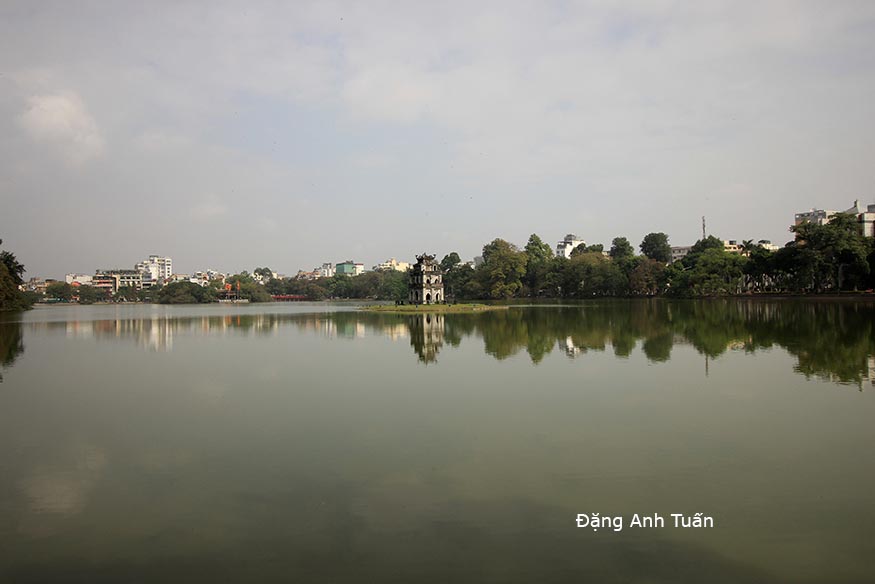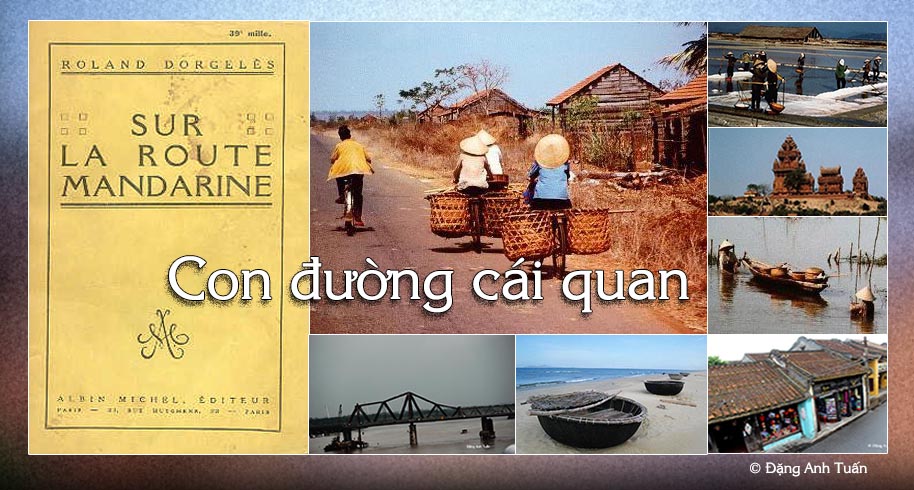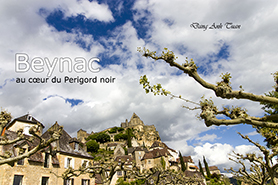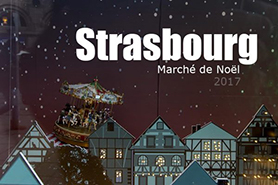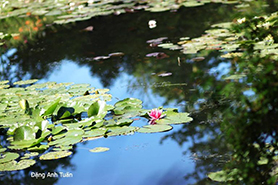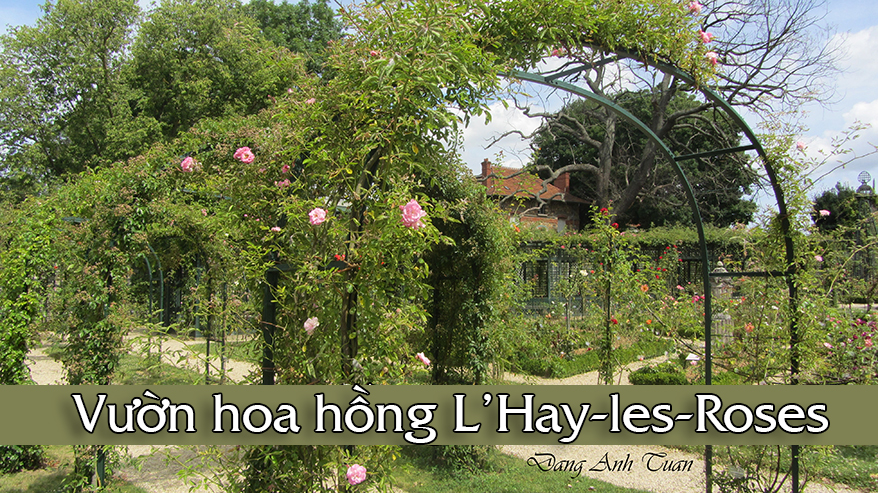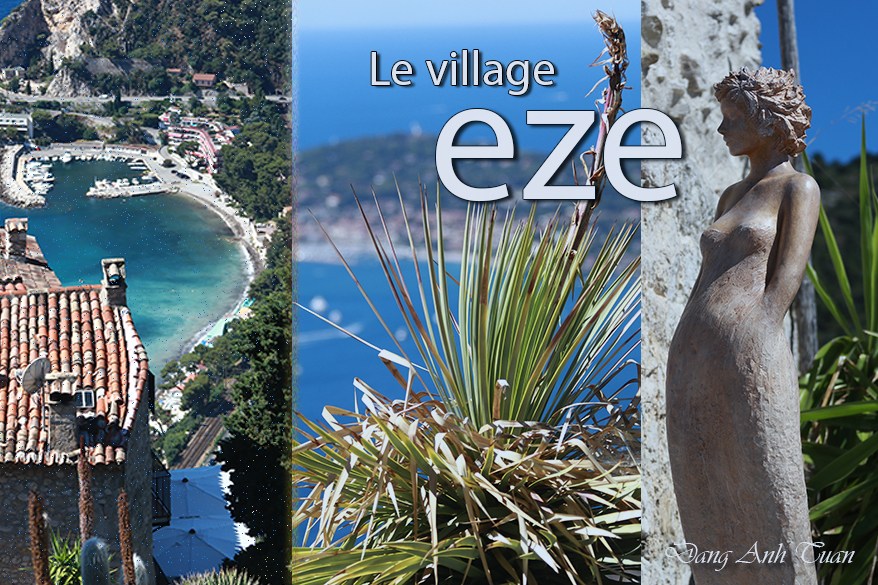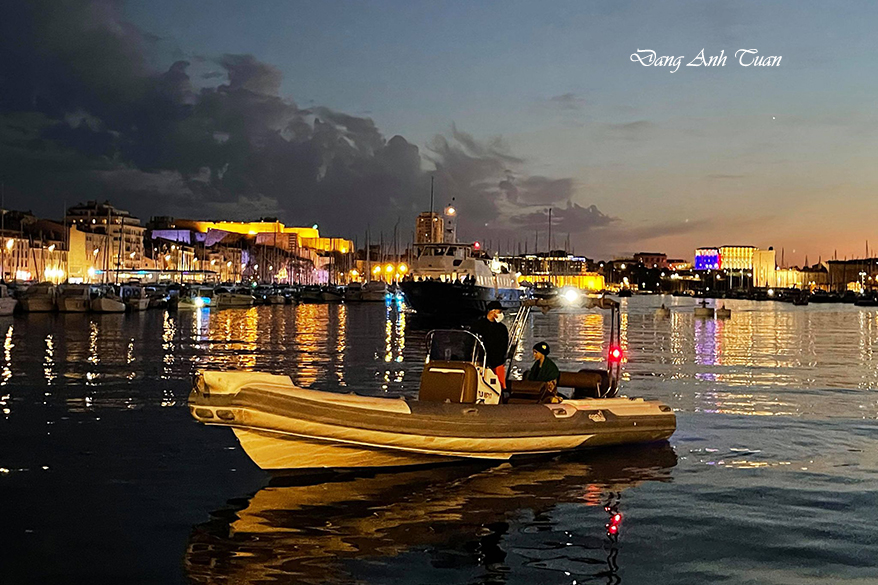Le fleuve Nho Quế se faufile comme un serpent à travers les montagnes
Version française
English version
Galerie des photos
Sau công viên địa chất Đồng Văn (Hà Giang), Việt Nam đuợc có thêm công viên địa chất thứ hai Non nước Cao Bằng gia nhập vào mạng lưới công viên địa chất toàn cầu mà tổ chức Liên Hiệp Quốc UNESCO công nhận vào tháng 4 vừa qua (2018). Tỉnh Cao Bằng cùng tên nầy thuộc vùng đông bắc Việt Nam, giáp ranh giới với khu tự trị Quảng Tây của Trung Quốc. Cao Bằng nằm cách xa thủ đô Hànội 286 km. Đến từ Hà Giang, tụi nầy chọn đi qua con đèo độc đáo Mã Pí Lèng. Đèo nầy nằm giữa cao nguyên Đồng Văn, một bên là vách núi Mã Pí Lèng còn một bên là sông Nho Quế. Đèo nầy không dài chi cho mấy chỉ khoảng 20 km nhưng nó rất hùng vĩ ngoạn mục nhất ở Việt Nam vì trong tầm mắt trên cao nhìn xuống đèo nó nhỏ như sợ chỉ, như con rắn bò qua hàng ngàn núi đá trọc màu xám trùng trùng điệp điệp lô nhô cây cối. Đèo nầy được ví như « vua của các đèo » ở Việtnam vì nó rất nguy hiểm với những đoạn cua tay lổn nhổn đá hộc, hai ô tô phải né tránh nhau với tiếng kèn. Sở dĩ đèo nầy mang cái tên Mã Pí Lèng vì theo tiếng Quảng Đông là sóng mũi con ngựa. Tuy nhiên các người Hmong họ cho là sóng mũi con mèo.
Theo lời kể dân gian, các con ngựa cái leo qua đèo nầy dễ bị trụy thai vì dốc nó cao quá chừng khiến con ngựa đuối sức trèo lên tắc thở. Đường nầy được mang tên Hạnh Phúc nhưng thật sư đựợc thành hình với mồ hôi, xương máu và nước mắt của đội quân cảm tử thuộc 16 dân tộc thiểu số (Tày, Mèo, Lolo, Pù Péo vân vân …) cùng nhau đục đẽo từng viên đá ngày đêm trong thời gian suốt 6 năm liền. Có thể nói là con đường gian nan khổ sở nhất cho những ai lái xe nhưng nó cũng là một niềm vui không ít cho những người du lịch thích cảnh vật thiên nhiên hoang dã. Có đến đây mới thành hảo hán vì đây được xem như là Vạn Lý Trường Thành của Việt Nam, có đến đây mới thấy đất nước Việt Nam rất xinh đẹp và xanh tươi.
Cao Bằng là một tỉnh ít bị ô nhiễm nhất chỉ có khoảng chừng 500.000 dân. Cao Bằng nổi tiếng có thác Bản Giốc, có động Ngườm Ngao, có khu di tích Pắc Bó. Chính ở nơi nầy mà người anh hùng của dân tộc Tầy Nùng, Nùng Trí Cao khởi nghĩa dành độc lập chống lại nhà Tống như tộc Lạc Việt với Ngô Quyền. Mặc dầu việc quật khởi không thành, ông được xem là người anh hùng của dân tộc Choang (Tày Nùng) và được tôn thờ ở Cao Bằng nhất là ở chùa Phật Tích Trúc Lâm Bản Giốc. Chính ở nơi nầy mà theo lời chỉ dẩn của Trạng Trình Nguyễn Bỉnh Khiêm mà con cháu nhà Mạc chạy về đây cố thủ, làm vua được ba đời thêm vào thế kỷ 16.
Après la reconnaissance du parc karstique de Đồng Văn , le Vietnam a eu récemment le deuxième parc géologique Non Nước Cao Bằng reconnu comme membre du Réseau global des parcs géologiques de la part de l’UNESCO en avril dernier (2018). La province Cao Bằng est située au nord-est du Vietnam et a une frontière commune avec la région autonome Kouang Si (Quảng Tây) de la Chine. Elle est distante de la capitale Hànội de 286 km. En partant de Hà Giang, nous sommes décidés de prendre la route menant au col majestueux Mã Pí Leng. Celui-ci est situé au cœur du plateau calcaire Đồng Văn avec d’un côté les falaises de Mã Pí Leng et de l’autre le fleuve Nho Quế. Ce col fait environ 20 km de long mais il est grandiose et très spectaculaire au Vietnam car à portée de vue en haut, le col ressemble à un fil mince ou à un serpent se faufilant à travers des milliers de rochers nus et gris qui se succèdent et se laissent envahir par la végétation. Il est considéré comme le « roi des cols » au Vietnam car il est tellement dangereux avec des tronçons de route en forme de coude et remplis de blocs de pierre équarris en désordre que le klaxon des voitures doit retentir sans cesse pour éviter les risques de collision.
C’est pourquoi ce col porte le nom « Mã Pí Lèng » car selon le cantonais, c’est le bout avant du nez du cheval. Mais pour les Hmong c’est le bout avant du nez du chat. Selon l’on-dit, en prenant ce col, la jument enceinte aurait le risque d’avortement car la pente est tellement haute que le cheval serait mort d’épuisement pour la montée. Cette route sinueuse est appelée souvent « route du bonheur » mais elle a été construite avec la sueur, le sang et les larmes des volontaires recrutés parmi les 16 ethnies minoritaires (Tày, Mèo, Lolo, Pù Péo etc.) du Vietnam, ne cessant pas de travailler jour et nuit durant les six années consécutives pour cette réalisation titanesque.
On peut dire que c’est la route la plus difficile pour les chauffeurs. En passant par ce col, on se sent fier d’être un brave car on le considère comme la Muraille de Chine du Vietnam. C’est aussi une joie immense pour les touristes, en particulier pour ceux qui aiment la nature sauvage. En venant ici, on s’aperçoit que le Vietnam est un très beau pays et qu(il il est incroyablement vert.
La province Cao Bằng est la moins polluée car elle n’a qu’à peu près 500.000 habitants. Cao Bằng est connue pour ses chutes d’eau Bản Giốc, sa grotte Nguờm Ngao, le site historique Pắc Bó. C’est ici que le héros national du peuple Choang Nùng Trí Cao a tenté le soulèvement populaire contre les Song (Chinois) pour établir un royaume Đại Nam au sud de la Chine comme les Vietnamiens avec le général Ngô Quyền. Malgré l’échec de ce soulèvement, il est considéré comme un héros du peuple Choang et vénéré partout à Cao Bằng, en particulier à la pagode Phật Tích en face des chutes d’eau Bản Giốc. C’est ici que sur les recommandations du Nostradamus vietnamien Nguyễn Bỉnh Khiêm que les descendants de la dynastie des Mạc se réfugièrent au 16ème siècle pour se défendre et maintenir encore leur règne pour trois générations.
- Grotte Ngườm Ngao (Động Ngườm Ngao)
After the recognition of the Đồng Văn Karst Park, Vietnam recently had the second Non Nước Cao Bằng Geological Park recognized as a member of the Global Network of Geological Parks by UNESCO last April (2018). Cao Bằng Province is located in the northeast of Vietnam and shares a border with the Kouang Si (Quảng Tây) Autonomous Region of China. It is 286 km from the capital Hanoi. Leaving Hà Giang, we decided to take the road leading to the majestic Mã Pí Leng Pass. This is located in the heart of the Đồng Văn limestone plateau with the cliffs of Mã Pí Leng on one side and the Nho Quế River on the other.
This pass is about 20 km long but it is grandiose and very spectacular in Vietnam because from the top, the pass looks like a thin thread or a snake winding through thousands of bare and gray rocks that follow one another and are invaded by vegetation. It is considered the « king of passes » in Vietnam because it is so dangerous with sections of road in the shape of an elbow and filled with disorderly squared stone blocks that the car horns must sound constantly to avoid the risk of collision. This is why this pass is called « Mã Pí Lèng » because according to Cantonese, it is the front tip of the horse’s nose. But for the Hmong it is the front tip of the cat’s nose. According to the saying, when passing through this pass, the pregnant mare would have the risk of abortion or the slope is so steep that the horse would die of exhaustion while climbing it. This winding road is often called « road of happiness » but it was built with the sweat, blood and tears of volunteers recruited from the 16 ethnic minorities (Tày, Mèo, Lolo, Pù Péo etc.) of Vietnam, who did not stop working day and night for six consecutive years for this titanic achievement.
One can say that this is the most difficult road for drivers. Passing through this pass, one feels proud to be brave because this pass is considered the Great Wall of China of Vietnam. It is also a great joy for tourists, especially those who love wild nature. Coming here, one realizes that Vietnam is a very beautiful country and incredibly green.
Cao Bằng province is the least polluted because it has only about 500,000 inhabitants. Cao Bằng is known for its Bản Giốc waterfalls, Nguờm Ngao cave, and the historical site Pắc Bó. It is here that the national hero of the Choang Nùng people, Trí Cao, attempted a popular uprising against the Song (Chinese) to establish a Đại Nam kingdom south of China, like the Vietnamese with General Ngô Quyền. Despite the failure of this uprising, he is considered a hero of the Choang people and is venerated everywhere in Cao Bằng, especially at the Phật Tích pagoda opposite the Bản Giốc waterfalls. It is here, on the recommendations of the Vietnamese Nostradamus Nguyễn Bỉnh Khiêm, that the descendants of the Mạc dynasty took refuge in the 16th century to defend themselves and maintain their rule for three more generations.
- Grotte Ngườm Ngao (Động Ngườm Ngao)
Galerie des photos (de Hà Giang à Cao Bằng)

